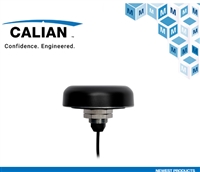| 型号 | 品牌 | 替代类型 | 描述 | 数据表 |
| CY8C20666A-24LQXI | CYPRESS |
类似代替  |
1.8 V Programmable CapSense® Controller with |

|
| 型号 | 品牌 | 获取价格 | 描述 | 数据表 |
| CY8C20666A-24LTXI | CYPRESS |
获取价格 |
CapSense Applications |

|
| CY8C20666A-24LTXIT | CYPRESS |
获取价格 |
CapSense Applications |

|
| CY8C20666AS-24LQXI | CYPRESS |
获取价格 |
1.8 V Programmable CapSense® Controller with |

|
| CY8C20666AS-24LQXIT | CYPRESS |
获取价格 |
1.8 V Programmable CapSense® Controller with |

|
| CY8C20666AS-24LTXI | CYPRESS |
获取价格 |
1.8 V Programmable CapSense® Controller with |

|
| CY8C20666AS-24LTXIT | CYPRESS |
获取价格 |
1.8 V Programmable CapSense® Controller with |

|
| CY8C20667-24LQXI | CYPRESS |
获取价格 |
1.8 V CapSense® Controller with SmartSenseâ |

|
| CY8C20667-24LQXIT | CYPRESS |
获取价格 |
1.8 V CapSense® Controller with SmartSenseâ |

|
| CY8C20667S-24LQXI | CYPRESS |
获取价格 |
1.8 V CapSense® Controller with SmartSenseâ |

|
| CY8C20667S-24LQXI | INFINEON |
获取价格 |
CY8C20xx7/S |

|
 SK海力士量产12层HBM3E,容量高达36GB
SK海力士量产12层HBM3E,容量高达36GB

 意法半导体传感器驱动Sphere,开启沉浸式电影新时代
意法半导体传感器驱动Sphere,开启沉浸式电影新时代

 摩尔斯微电子在美国约书亚树国家公园测试 Wi-Fi HaLow
摩尔斯微电子在美国约书亚树国家公园测试 Wi-Fi HaLow

 贸泽上架Tallysman TW5386智能GNSS天线
贸泽上架Tallysman TW5386智能GNSS天线
